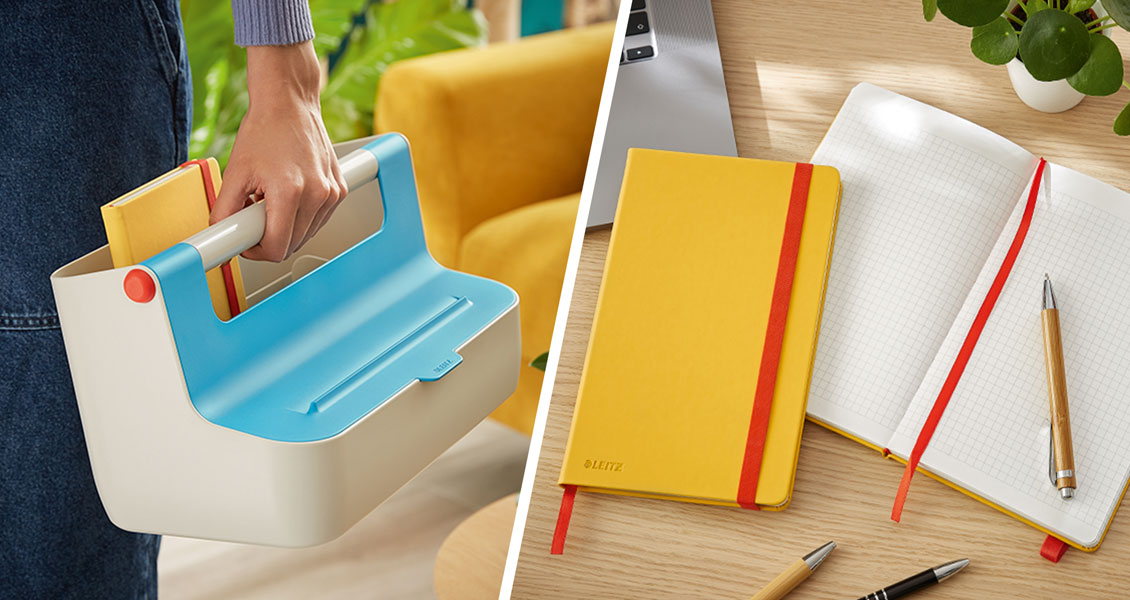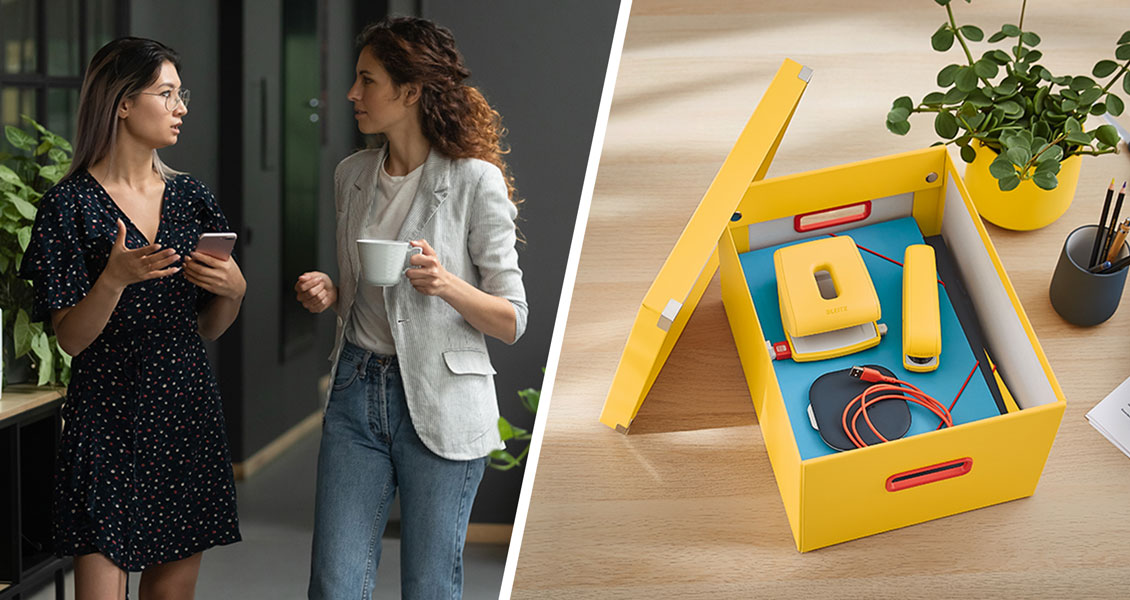Best Practices for Successful Hybrid Working
31.08.2022

Many companies have found that they need to adjust their working policies in order to attract and maintain the best talent. As well as talent recruitment, adopting more flexible ways of working can help employees to work more productively and support their wellbeing.
One flexible working practice companies are implementing is hybrid working. Hybrid working involves employees spending some of their hours working from home and some in the office. This can bring many benefits to both the employee and the business, but it is essential that a hybrid working policy is put into effect correctly for it to be successful.
Below are our best practices for successful hybrid working, from the tools needed to the working habits that will need to be adjusted.

Equip Your Staff with the Right Tools
When your employees will be moving between home and the office, it’s vital that they have the right tools to support their work. A laptop with a wireless mouse and wireless keyboard are perfect for transporting between workstations. Employer responsibility for staff’s health and wellbeing will extend to their home working setup, so you should consider ergonomics too. Our adjustable laptop stand will improve viewing comfort and posture, and also folds up flat for easy transportation. You should also ensure staff have a suitable laptop bag to transport their equipment as well as any paperwork or notebook they need. This will ensure they always have what they need, whether they’re working in the office or at home.
Many companies who implement hybrid working also use a hot desking policy in the office. With a certain number of people working out of the office at any one time, less space is needed. So, businesses can benefit from renting smaller offices as people don’t need a permanent desk that will be empty for a portion of the week. If your company is also switching to hot desking, you should ensure you have the right equipment to support staff with office organising. A storage carry box is perfect for letting people pack away their equipment they don’t need to take home and store it away until they’re next in the office. This helps people to keep an organised desk at work and keep things tidy for the next person to use the workstation.
Set Clear Expectations
It’s important to set clear expectations for work productivity when hybrid working. Some people may be inclined to slack off at home as there may be more distractions – others may find they work too much, with less separation between their work and home life. Make sure that clear deadlines and tasks for projects are set and communicated to the team. Keep in regular contact with them to ensure everyone is working productively whilst also looking after their wellbeing.
Expectations should also be set over which days employees will be expected to be in the office and when they should work from home. Different hybrid working policies will work best for different companies. Some businesses may benefit from setting specific days for each team member, whilst others may prefer to let the individual decide. You might want to have the same schedule every week or change it week by week depending on what projects are being worked on. Whatever will work for your team, make sure to communicate the policy clearly.

Utilise Digital Communication Tools
It’s important to keep up good communication when team members are working from multiple locations. You can utilise digital communication tools to ensure everyone on the team is kept up to date with developments in projects and within the business, and also to keep in touch socially. You should make sure people know which channels to use to speak about certain subjects, so nothing gets missed or lost in the noise.
Instant messaging platforms can be good for more informal communication, whereas email can be used for more official correspondence. The business may need to look at its communication strategy to ensure the right messages are reaching the right people. You should also have channels open for people to respond so any concerns or questions can be addressed. This will help people to feel engaged with the company and also help people to know what is expected of them.
Organise Tasks and Projects
When you’re organising your hybrid working, you should consider the types of tasks and projects that will need to be undertaken. Certain types of work may be better suited to home working, when people can work on their own, and others will be better in the office where people can collaborate. Work with your team to organise a workflow so the right tasks can be carried out in the right location.
If it’s not possible to hold meetings and joint working in-person every time, utilise digital tools instead. Hold video meetings so people who aren’t working on site can also be involved.
Remember Data Protection
Data protection can be a concern when you have people working off-site. You can remove this fear by ensuring relevant employees have a home paper shredder. A paper shredder at home will allow employees to securely destroy any confidential paperwork, rather than transporting it between the home and office. This will reduce the likelihood of a data breach and ensure the business can keep GDPR compliant. It will also help with the employee’s organisation at home, removing any unwanted paperwork from causing clutter on their desk.
Maintain a Good Culture
You shouldn’t compromise on culture just because your employees are working in different locations. Think about what makes your business culture unique and try to replicate that digitally. It might be as simple as checking in with employees via instant messaging or you might want to organise a regular trivia quiz or virtual escape room held over video call. This can help to strengthen the bond between employees and support their productivity when it’s time to work.
If it’s important for your employees to have time face-to-face, schedule a monthly or quarterly day where everyone needs to be in the office. Hold a meeting to update them on news about the business, as well as performance. This is a great opportunity to recognise employees for their good work and make people feel valued.

Consider Your Onboarding Process
The first few weeks at a new job are crucial for helping new starters to understand their role and place in the company. With team members working elsewhere, it can be tricker for this process to go smoothly. You might want to ask new starters to work primarily in the office whilst they get to grips with the job, before transitioning to hybrid working when they feel more confident.
It can also be helpful to ask one or multiple team members to work from the office alongside the new starter for the first few weeks. This way, someone will always be on hand to offer support and help them learn the new job. This will usually mean they pick up things quicker and can move to hybrid working sooner. Whilst they’re in the office, make sure they know the right channels to communicate to the team and what will be expected of them when they move to hybrid working. You should also ensure they have a chance to talk to every member of the team in the first week, whether in-person or via a video call. This will help them to feel part of the team and know who they need to speak to for various tasks and projects.
Regularly Source Feedback
You should aim to get regular feedback from employees both before and after you’ve implemented hybrid working. You should work with staff to find the right hybrid working policies by finding out what they think will work best for their ways of working. You can then combine these with what will work best for the business to find your ideal hybrid working policy.
You should also get feedback once this policy is put in place, to make sure everything is working as it should. You should let employees know how they can raise any concerns and then take the right steps to rectify any issues. You should send out regular surveys throughout the year, as well as having an open channel for people to share their feedback on an ad hoc basis. This way you can make any necessary improvements to your hybrid working to ensure it is continuing to be successful.
Leitz has a range of office equipment and your home office essentials to create a productive and relaxing working environment.
Read more about flexible working practices for your business:
Can Hot Desking Benefit Your Company?